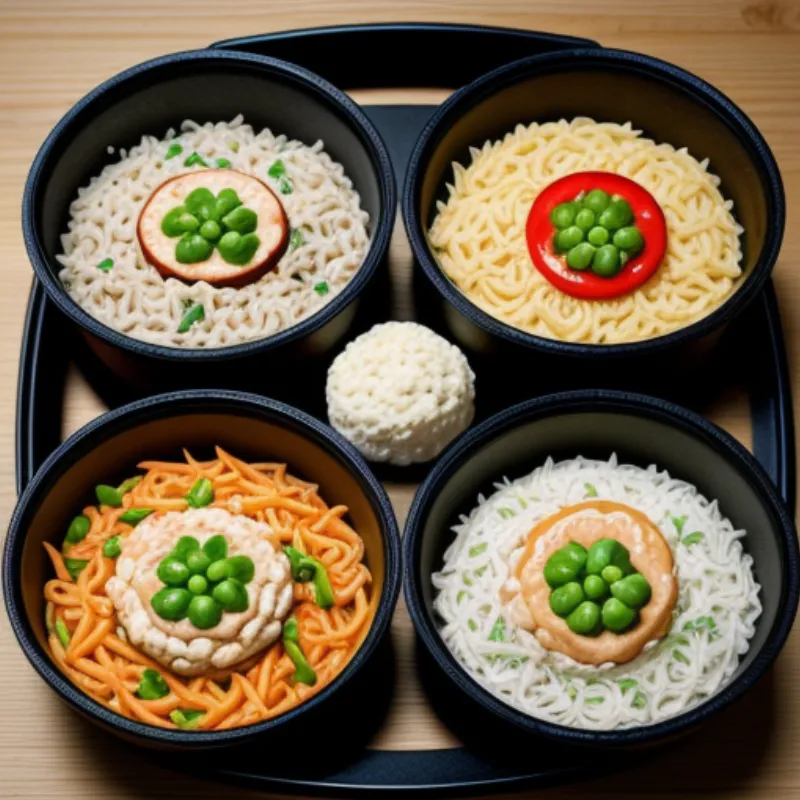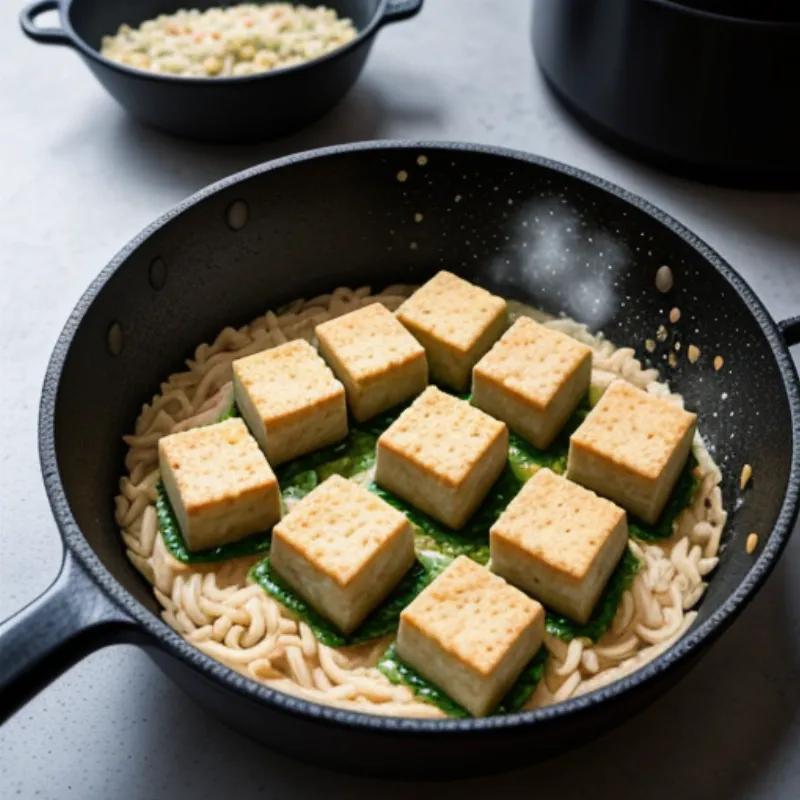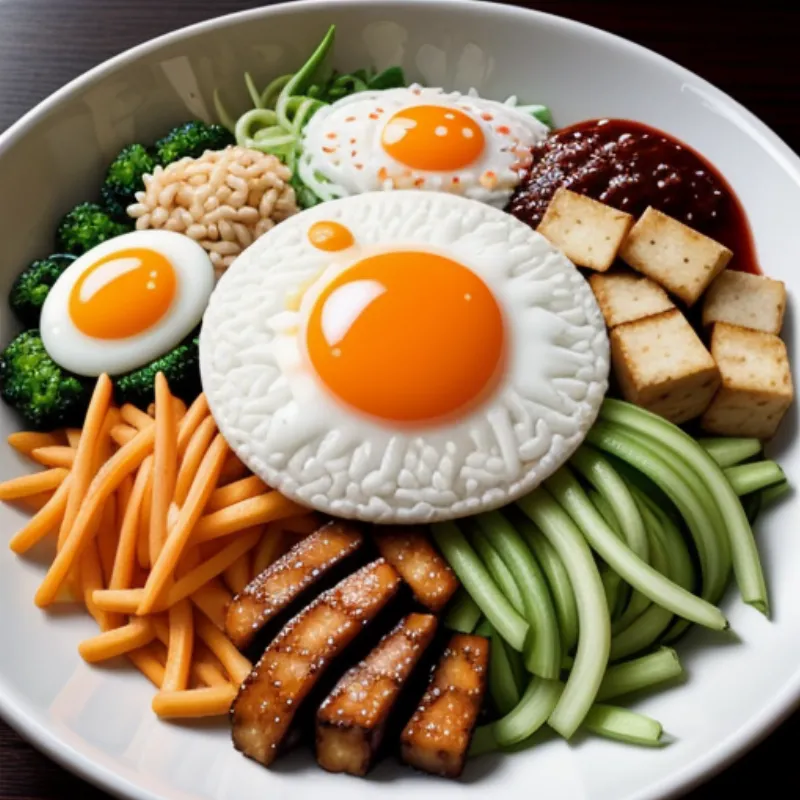Vegetable and tofu bibimbap is a vibrant and flavorful Korean rice dish that’s as fun to eat as it is to make. Imagine fluffy rice topped with colorful, seasoned vegetables, crispy tofu, and a spicy gochujang sauce. It’s a symphony of textures and tastes that will transport your taste buds straight to the bustling streets of Seoul. Whether you’re a seasoned vegetarian or simply seeking a healthy and delicious meal, this bibimbap recipe is for you.
Dive into a Bowl of Goodness: Exploring Vegetable and Tofu Bibimbap
Bibimbap, meaning “mixed rice” in Korean, is a beloved dish that beautifully showcases the balance of flavors and textures. The beauty of bibimbap lies in its versatility; you can easily adapt it to your liking with different vegetables, protein sources, and sauces. In this recipe, we’ll focus on a vegetarian version featuring crispy tofu, a wonderful source of plant-based protein, and an array of colorful vegetables for a nutritious and satisfying meal.
Gather Your Ingredients: A Rainbow on Your Plate
For this recipe, you’ll need these fresh and flavorful ingredients:
For the Rice:
- 1 cup short-grain white rice
- 1 ½ cups water
For the Tofu:
- 14 ounces extra-firm tofu, pressed and cubed
- 2 tablespoons soy sauce
- 1 tablespoon sesame oil
- 1 teaspoon garlic powder
- ½ teaspoon black pepper
For the Vegetables:
- 1 cup spinach, washed and dried
- 1 cup bean sprouts, rinsed
- ½ cup carrots, julienned
- ½ cup zucchini, julienned
- ½ cup shiitake mushrooms, sliced
- 2 tablespoons sesame oil, for sauteéing
For the Sauce:
- 2 tablespoons gochujang (Korean chili paste)
- 1 tablespoon soy sauce
- 1 tablespoon rice vinegar
- 1 teaspoon sesame oil
- 1 teaspoon sugar
- ½ teaspoon toasted sesame seeds
Optional Garnishes:
- 1 fried egg per bowl
- Kimchi
- Chopped green onions
- Toasted sesame seeds
 Colorful Vegetable and Tofu Bibimbap Ingredients
Colorful Vegetable and Tofu Bibimbap Ingredients
Tools of the Trade: Preparing for Bibimbap Perfection
Before we begin our culinary adventure, gather these essential tools:
- Large pot for cooking rice
- Two large skillets
- Medium mixing bowl
- Small mixing bowl
Let’s Get Cooking: Your Step-by-Step Guide
1. Cooking the Rice:
- Rinse the rice under cold water until the water runs clear. This removes excess starch.
- Combine the rinsed rice and water in a large pot and bring to a boil over high heat.
- Once boiling, reduce heat to low, cover, and simmer for 15 minutes, or until the water is absorbed and the rice is tender.
- Remove from heat and let it rest for 10 minutes, then fluff with a fork.
2. Preparing the Tofu:
- In a medium mixing bowl, whisk together the soy sauce, sesame oil, garlic powder, and black pepper.
- Add the cubed tofu and gently toss to coat evenly.
- Heat 1 tablespoon of sesame oil in a large skillet over medium heat.
- Add the tofu and cook for 5-7 minutes, or until golden brown and crispy, flipping occasionally.
- Remove from heat and set aside.
3. Sautéing the Vegetables:
- Heat the remaining tablespoon of sesame oil in the same skillet over medium heat.
- Add the carrots, zucchini, and mushrooms and sauté for 3-5 minutes, or until slightly softened.
- Add the spinach and bean sprouts and cook for another 2-3 minutes, until wilted.
- Remove from heat and set aside.
4. Mixing the Sauce:
- In a small mixing bowl, combine the gochujang, soy sauce, rice vinegar, sesame oil, sugar, and sesame seeds.
- Whisk until smooth and well combined.
 Crispy Tofu Being Cooked in a Skillet for Bibimbap
Crispy Tofu Being Cooked in a Skillet for Bibimbap
Assembling Your Masterpiece: Creating a Feast for the Eyes
Now comes the fun part!
- Divide the cooked rice among individual bowls.
- Arrange the sautéed vegetables, crispy tofu, and any other desired garnishes over the rice.
- Drizzle the prepared gochujang sauce over the top.
Tips and Tricks for Bibimbap Perfection:
- Pressing the Tofu: For extra crispy tofu, press it for at least 30 minutes before cooking. This removes excess moisture.
- Gochujang Substitute: If you can’t find gochujang, you can substitute it with a mixture of Korean chili flakes (gochugaru) and a touch of miso paste for a similar flavor profile.
- Spice Level: Adjust the amount of gochujang in the sauce to your preferred spice level.
- Don’t Overcook the Vegetables: The vegetables should be slightly crisp-tender. Overcooking them will make them mushy.
Bibimbap FAQs: Your Questions Answered
- Can I make this recipe ahead of time? Absolutely! You can prepare the rice, tofu, and vegetables ahead of time and store them separately in airtight containers in the refrigerator. When ready to serve, simply reheat the components and assemble the bowls.
- What other vegetables can I use? Feel free to get creative! Other great options include mushrooms, bell peppers, cucumbers, or even kimchi.
A Flavorful Conclusion: Enjoying Your Culinary Creation
And there you have it — a delicious and satisfying vegetable and tofu bibimbap that’s bursting with flavor and nutrition. This vibrant dish is sure to impress your family and friends. So gather your ingredients, put on your chef’s hat, and embark on a culinary adventure to Korea from the comfort of your own kitchen! Don’t forget to share your bibimbap creations and tag us on social media.
For more delicious Asian-inspired vegetarian recipes, check out our guide on How to Make Makgeolli Sauce.
 Delicious Vegetable and Tofu Bibimbap Ready to Eat
Delicious Vegetable and Tofu Bibimbap Ready to Eat
